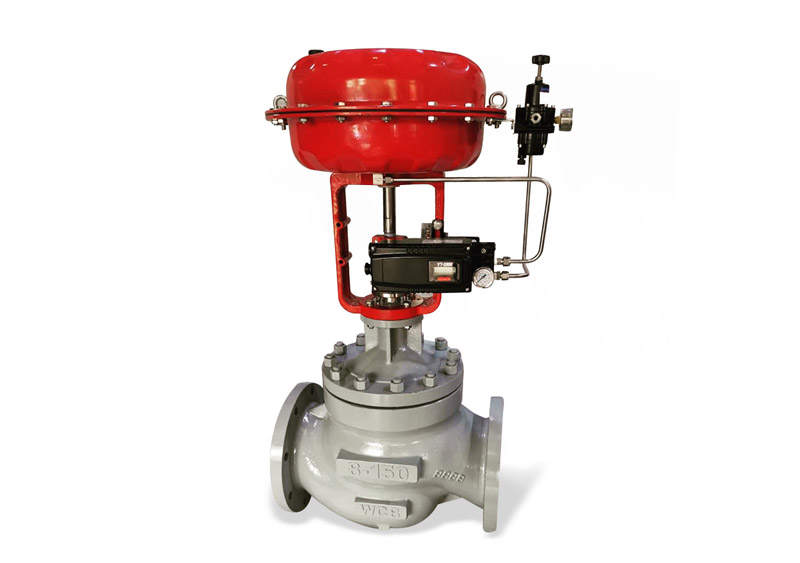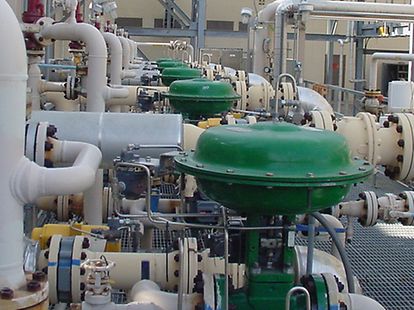How Control Valves Impact Power Efficiency in Industrial Settings
Wiki Article

Maximize Power Cost Savings and Convenience With Advanced Structure Automation Controls
In the world of modern design and center administration, the integration of advanced building automation manages stands as an essential development. By utilizing the power of automation, structures can adapt, respond, and progress in means that were once inconceivable.Power Effectiveness Benefits
Power effectiveness benefits can substantially decrease power usage and operational expenses in structures. By executing energy-efficient methods and technologies, building proprietors and operators can accomplish significant savings while additionally adding to ecological sustainability. Among the primary advantages of improving power performance in structures is the decrease of utility bills. Energy-efficient systems, such as innovative building automation controls, can enhance making use of sources like cooling, heating, and lighting, resulting in lower energy expenses over time.In addition, boosted power effectiveness can prolong the lifespan of structure devices and systems. By operating a lot more effectively, heating and cooling systems, lighting fixture, and various other building parts experience less deterioration, causing decreased upkeep and substitute costs. In addition, energy-efficient buildings typically command higher residential property values and rental prices, giving lasting economic benefits to proprietors.
Moreover, energy performance can improve occupant comfort and efficiency. Correctly managed interior settings with optimal illumination and thermal conditions develop a more helpful and pleasurable work area, leading to improved staff member fulfillment and performance. Generally, the energy performance benefits related to innovative building automation controls are complex, including cost savings, environmental stewardship, and resident wellness.
Boosted Comfort Control
Enhancing comfort control in structure settings requires an advanced combination of advanced automation systems for ideal owner health. By using sophisticated building automation controls, centers can tailor the indoor setting to satisfy the specific demands and choices of passengers. control valves.Improved comfort control exceeds fundamental temperature changes. It consists of functions such as personalized setups, occupancy sensors, and all-natural light usage to produce a receptive and vibrant atmosphere. By including these innovative controls, buildings can not just improve comfort however also improve power effectiveness by optimizing system procedures based on real tenancy and usage patterns. Inevitably, prioritizing resident convenience with innovative automation systems brings about a much more satisfying and healthier interior environment.
Operational Efficiency Improvements

Moreover, the execution of real-time tracking and analytics tools allows structure drivers to determine power ineffectiveness and operational anomalies promptly. By continuously checking energy use patterns and system efficiency metrics, changes can be made in real-time to optimize power consumption and guarantee peak functional performance. control valves. Additionally, integrating demand feedback strategies right into building automation controls can additionally boost operational efficiency by dynamically adjusting energy usage based on grid conditions and rates signals
Indoor Environment Optimization
Effective interior environment optimization is a fundamental aspect of structure automation controls, ensuring occupants' convenience and health while making the most of power financial savings. By making use of advanced sensors and controls, developing automation systems can constantly readjust and keep track of temperature level, humidity degrees, air quality, and ventilation to develop an optimum interior setting. Preserving comfy and consistent problems not just improves passenger contentment however additionally enhances productivity and overall well-being.Indoor environment optimization likewise plays an important function in energy effectiveness. By fine-tuning heating, air conditioning, and air flow systems based on real-time data and occupancy patterns, building automation controls can substantially lower power usage - control valves. Executing techniques such as demand-controlled air flow and thermal zoning can help decrease energy waste while making sure that each location of the structure receives the needed conditioning.

Sustainable Setting Production
Building automation controls not only i thought about this maximize interior climate conditions for energy efficiency and owner comfort however also lay the foundation for developing a sustainable environment through critical administration of sources and systems. By incorporating sophisticated structure automation modern technologies, such as sensors, actuators, and intelligent software, facilities can check and readjust power usage in real-time to reduce waste and decrease their carbon impact. These systems enable predictive upkeep, recognizing possible problems before they escalate and maximizing devices efficiency to enhance durability and efficiency.Furthermore, lasting setting development extends beyond power administration to encompass water preservation, waste reduction, and indoor air high quality enhancement. Building automation controls can regulate water use, identify leakages, and make certain correct garbage disposal practices, adding to general sustainability initiatives. Furthermore, by regulating and checking ventilation and purification systems, these innovations improve passenger health and wellness and efficiency while lowering energy usage linked with a/c operations.
Final Thought
To conclude, advanced structure automation manages deal considerable advantages in terms of power cost savings, comfort control, operational effectiveness, interior climate optimization, and producing a sustainable atmosphere. By executing these controls, buildings can attain ideal efficiency while minimizing power consumption and improving occupant comfort. It appears that making use of sophisticated automation modern technology is crucial in improving building efficiency and producing a more lasting future.Power efficiency benefits can dramatically lower energy usage and operational prices in buildings. On the whole, the power effectiveness benefits connected with sophisticated building automation controls are multifaceted, encompassing expense financial savings, ecological stewardship, and occupant wellness.
Additionally, including demand action strategies into structure automation controls click can even more enhance operational efficiency by dynamically adjusting energy usage based on grid conditions and pricing signals.
Building automation manages not just maximize interior climate conditions for energy effectiveness and occupant comfort but additionally lay the foundation for producing a lasting environment via strategic management of sources and systems.In conclusion, advanced structure automation regulates deal substantial benefits in Click Here terms of power cost savings, convenience control, functional performance, indoor climate optimization, and creating a sustainable setting.
Report this wiki page